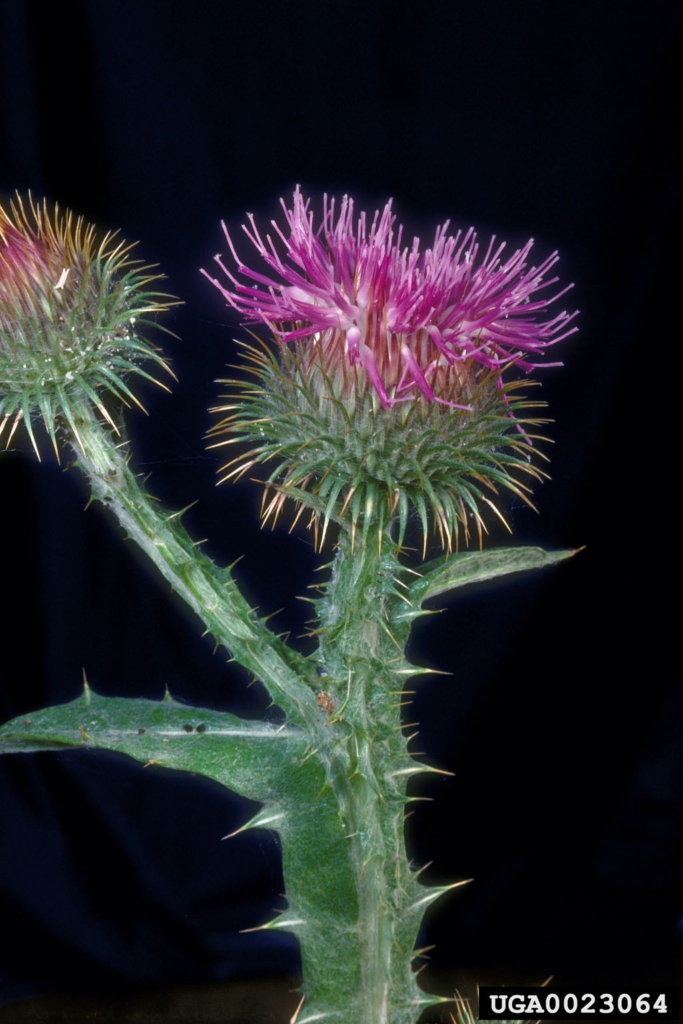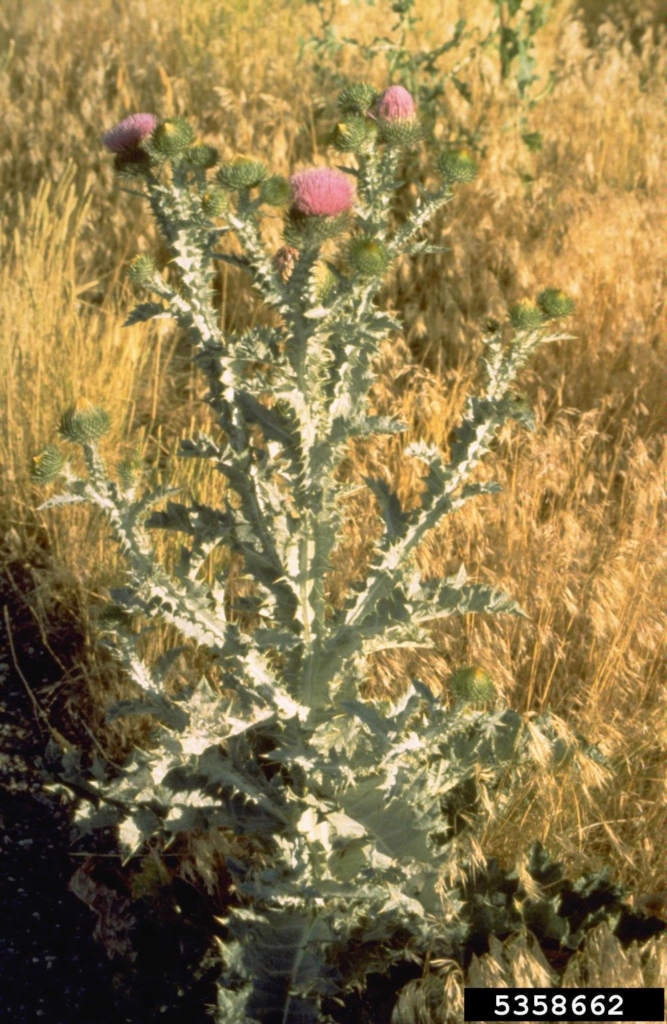Scotch Thistle
Onopordum acanthium
Plant Description
Scotch thistle is a branched, biennial or annual with a broadly winged stem. Flowers in mid-summer with globe-shaped flowerheads, dark pink to lavender in color (occasionally white). Long needle-like bracts around flowerhead base. Lease are covered with sharp yellow spines and a thick mat of woolly hairs. Can grow up to 6 feet wide.
Plant Details
| Life Forms | |
|---|---|
| Habitats | |
| ODA Listing | |
| Soil and Moisture Conditions | |
| Suggested Actions | |
| Shade Preference | |
| Mature Height | 8' |
| Distribution | most of the US, in western states it associates with high moisture and dry climates. |
| Control | Small infestations can be dug out, sever plant taproot well below the soil surface. Mow once plant is mature, but before seed production - less effective. Some goats will graze on the plant. |
| Disposal Methods | Bag and throw away any cut flowerheads to prevent germination. |
| Reproduction and Spread | Scotch thistle reproduces solely through seed production. Seeds generally germinate in late fall but germination can occur anytime throughout the year. During the first growing season, Scotch thistle produces a rosette of leaves and fleshy taproot. The plant bolts early in the second growing season and flowers from June to August. Plants can produce from 70 to over 300 flower heads which can produce 100 to 200 seeds per head. Spread via wind. |
| Introduced | Introduced into the US in 1800s as an ornamental. |
| Look Alikes | bull thistle, and many other thistles |
| Impact | Problem in rangelands and other open areas where it crowds out competing vegetation and reduces available forage. |
| More Info |
© Marion Soil and Water Conservation District. All Rights Reserved.


